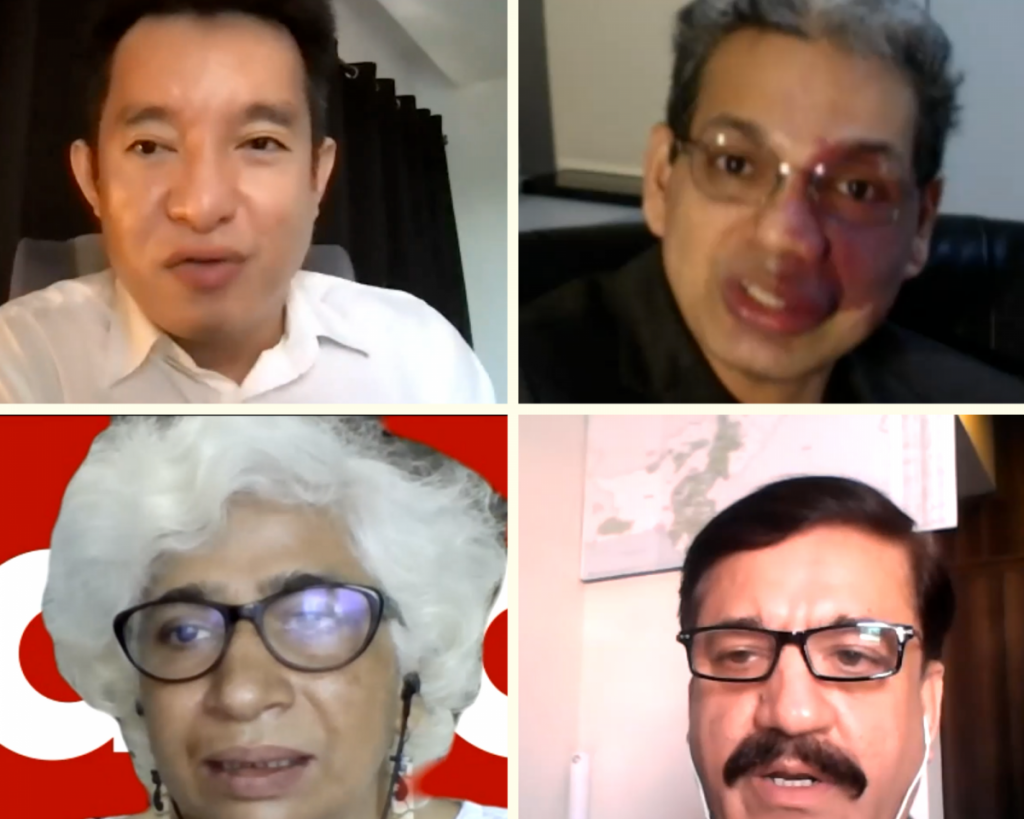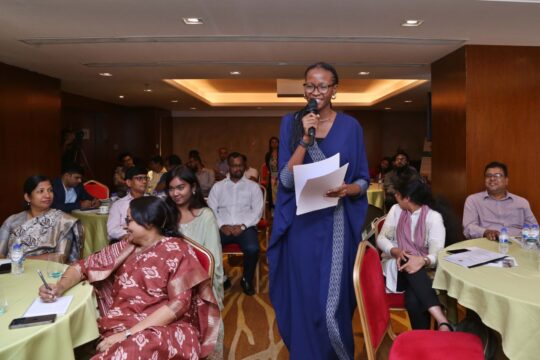The first Regional Technical Working Group (RTWG) on the nexus between Emergency Operation Centers (EOCs), Early Warning Systems (EWS), and Risk Analytics (RA) took place on 24 March 2021. The group will act as a think tank to share good practices and provide technical know-how, suggestions, and guidelines to the member countries of the Asian Preparedness Partnership (APP). The purpose of the meeting was to share the following:
- Outline the objectives, roles, and deliverables of the RTWG,
- Discuss the specific roles and responsibilities of the members,
- Prioritize the key outputs and deliverables for the year 2021, and
- Promote the sharing of good practices and experiences from the member countries.
Mr. Sajid Naeem, Senior Country Program Manager of the Asian Disaster Preparedness Center (ADPC), facilitated the meeting. He called on Mr. Sisira Madurapperuma, Director, the Preparedness for Response and Recovery (PRR) Department of ADPC to provide opening and welcome remarks. He highlighted how the nexus between EOC, EWS, and RA is an important issue in the context of the Asian Preparedness Partnership’s (APP) localization agenda and innovations in disaster management. As climate change is causing extreme and unprecedented events, bringing climate nexus and looking at the role of EOC and risk analytics for climate uncertainty is also important. Mr. Madurapperuma especially encouraged all of the participants to think outside the box and consider the platform as a means of linking stakeholders from various groups who share the same vision and outlook.

Ms. Shalini Kanwar, Program Lead for APP, provided a brief overview of how the RTWG was conceptualized and its overall objectives. She also detailed how this RTWG would add to the efforts of the other working groups on ‘Private Sector Engagement’ and ‘Inclusive Approaches in Localization’ that are already operational as a part of the APP governing structure. Her presentation was followed by an interactive discussion during which the participants expressed their perspectives and vision for the RTWG as it goes forward.
One of the main purposes of the RTWG is to promote and share good practices. Ms. Veronica Gabaldon, Executive Director of the Philippines Disaster Resilience Foundation (PDRF) presented the private sector’s initiatives for risk monitoring, business continuity planning (BCP), and EWS. She introduced the hazard monitoring system on the GIS platform. The system acts as a decision-making tool that is able to perform spatial analysis for companies using information such as their infrastructure and assets. Moreover, the system also performs the operations of an incident reporting platform that automatically updates the latest data of disaster events. She concluded with a description of the PDRF’s online dashboard and their work on developing the capacity of the government and humanitarian sector.



